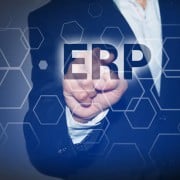How to modernize your legacy ERP system
While the taking your business to the cloud is a popular trend these days, there are still some businesses who choose to stay on premise and keep their legacy systems in place. This may be a good decision for a company, though managers should still consider modernizing their legacy enterprise resource planning (ERP) systems. Healthcare Informatics consultant Reda Chouffani of
- Rehost. “A company that has outgrown their existing ERP and is seeing performance start to suffer can consider moving its ERP system into another infrastructure, such as a new server or cloud service provider, to gain more processing power, faster storage and better networking. Rehosting also includes upgrading only the hardware or software of the back-end database engine that stores the ERP data. This can improve system performance.”
- Refactor. “Refactoring an ERP system involves evaluating and optimizing ERP processes and customizations. This approach requires an internal committee of business analysts, IT staff, subject matter experts and other business leaders. The committee evaluates the ERP system and recommends changes that will increase efficiency and improve overall operations.”
- Rearchitect. “Rearchitecting is adding third-party apps to gain functionality that the legacy ERP lacks, which could potentially solve business issues. For example, a company may want to eliminate duplicate data entry between the current ERP and their supplier’s system. One potential fix is to adopt an electronic data interchange that can provide a way to automatically exchange data such as orders, invoices and delivery confirmations, which reduces duplication.”
- Rebuild. “As with refactoring, the rebuilding approach includes a committee reviewing and attempting to optimize existing processes. However, for this strategy, the committee considers rebuilding some of the existing business processes, including potentially starting from scratch. The committee may add new tools to the mix or change staff responsibilities.”
- Replace. “The replace strategy refers to eliminating some of the legacy ERP system components that are ineffective and don’t meet business requirements. Manufacturing resource planning, warehouse management systems and production scheduling are a few ERP components that organizations often find difficult to use or inadequate for business needs.”
When choosing this approach, there are certain factors to consider when selecting a legacy ERP modernization approach. Two very important factors to note are business risk and costs. While every critical business decision comes with risks, make sure your organization knows the high and low level risks you’re taking in modernizing your ERP system. Likewise, your company must also evaluate whether you can afford these business decisions.


